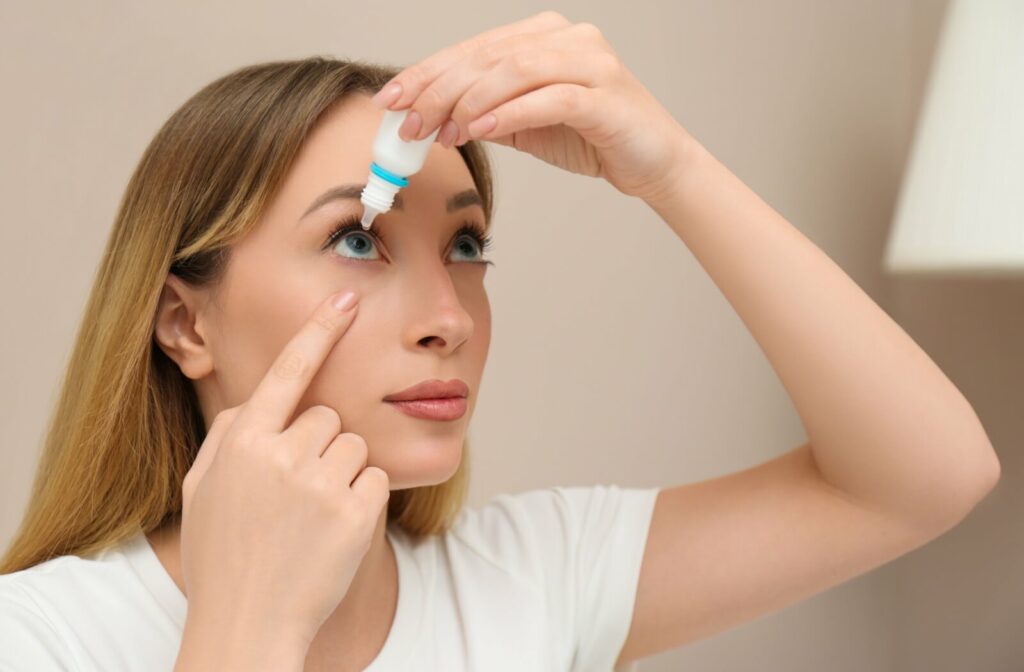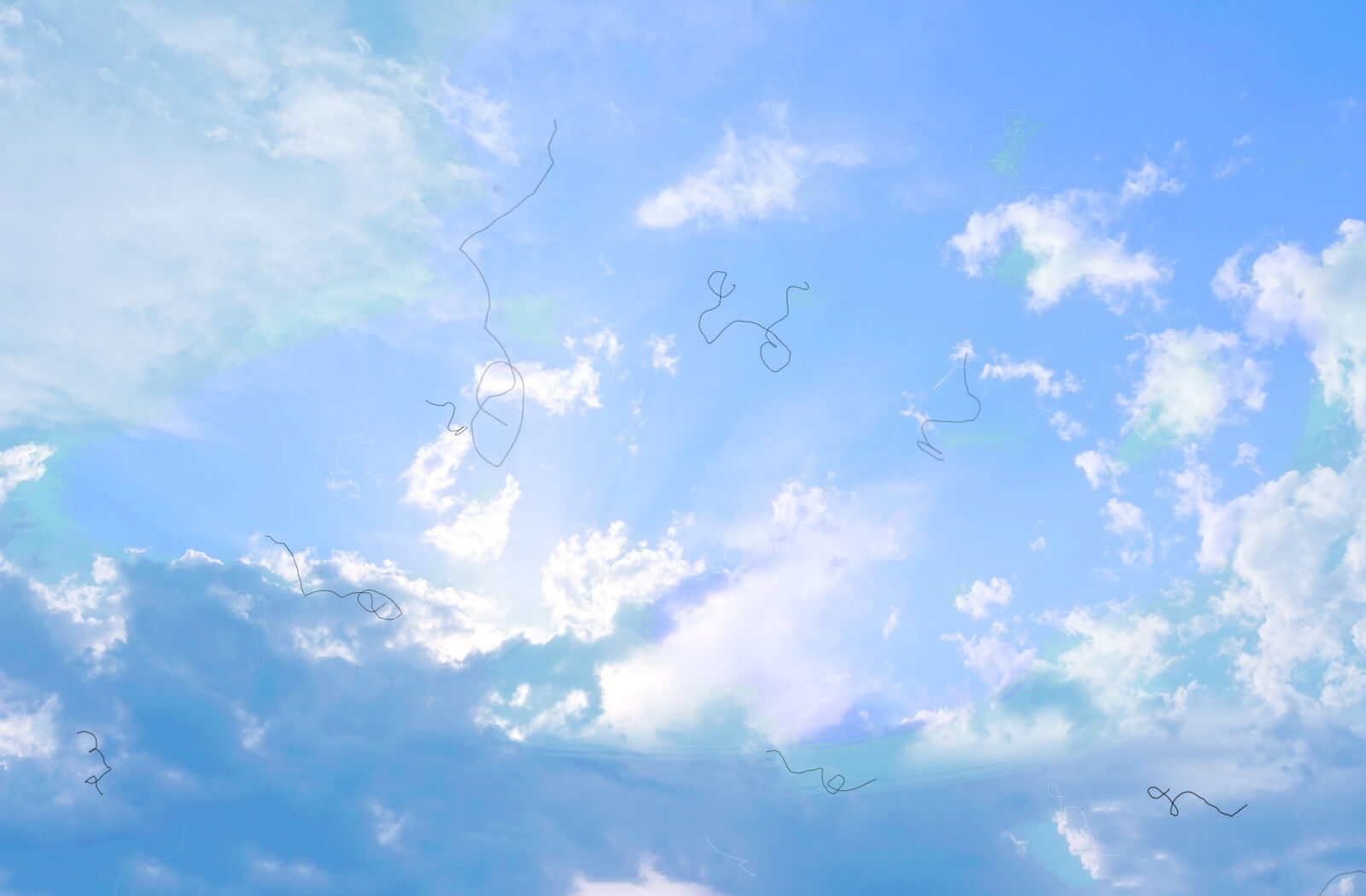Dry, irritated eyes can feel like a constant nuisance. Many people with dry eye syndrome also have symptoms such as discomfort, redness, and blurred vision. Some people may experience dry eyes with floaters—those tiny spots or squiggly lines that drift across your field of vision. However, floaters are a different visual concern and have no connection to dry eyes.
If your symptoms persist or affect your daily life, a comprehensive eye exam can determine the underlying cause. With a proper diagnosis, your eye doctor can recommend the right treatments for symptom relief.
What Is Dry Eye?
Dry eye occurs when the eyes fail to produce sufficient or quality tears to keep the surface adequately lubricated. It’s a common condition that affects millions, particularly older adults and office workers. Causes of dry eye include:
- Certain medical conditions
- Environmental factors
- Hormonal changes
- Certain medications
Symptoms of dry eye include:
- A gritty, scratchy sensation
- Redness and irritation
- Blurred or fluctuating vision
- A burning or stinging feeling
- Eye fatigue or discomfort
Dry eyes can reduce overall quality of life, making everyday tasks such as reading, screen time, or even going outdoors uncomfortable.
What Are Floaters?
Floaters are tiny shapes that appear to “float” in your vision. They can look like small dots, threads, or cobweb-like forms that drift when your eyes move. Floaters are shadows cast on the retina (the light-sensitive tissue at the back of the eye) caused by clumps or strands of protein inside the vitreous, the clear, gel-like substance filling the eye.
While floaters are typically harmless and related to aging, they can result from an eye injury or eye disease and occasionally indicate more serious eye concerns, such as retinal detachment. Floaters can also become more noticeable in bright lighting or after looking at a blank surface like a blue sky or white wall.
Is There a Link Between Dry Eyes & Floaters?
If you experience both conditions, you may wonder if there’s a link. Dry eyes and floaters are not directly connected. Dry eyes and floaters result from different mechanisms within the eye:
- Dry eyes result from problems with tear production or tear film stability.
- Floaters originate in the vitreous and relate to the aging process or other underlying issues in the back of the eye.
While there’s no scientific evidence showing that dry eyes cause floaters, certain symptoms of one condition may draw more attention to the other. For example, people who experience vision discomfort due to dry eyes may become more attuned to the presence of floaters.
The Importance of Eye Exams
When it comes to eye health, context matters. Regular eye exams can distinguish between different eye issues and address them effectively.
Floaters can be a sign of a serious problem if they are sudden, increase in number, or are accompanied by flashes of light—all of which could signal a retinal issue that requires immediate attention. Without treatment, dry eye can lead to complications like corneal damage or chronic irritation.
Consulting your eye doctor early can help determine whether your symptoms are part of one condition, separate issues, or an indication of another underlying concern.
Tips for Managing Dry Eyes & Reducing Risks

Managing dry eyes can improve overall vision comfort, and prioritizing eye health can help manage the risk of floaters. Here are some strategies for relief and prevention:
- Use preservative-free artificial tears: Over-the-counter lubricating drops can help replenish moisture and soothe dry eyes.
- Use a humidifier: A humidifier can combat dry environments, especially during winter.
- Limit screen time: Take breaks during prolonged screen time, using the 20-20-20 rule (every 20 minutes, look 20 feet away for 20 seconds).
- Wear sunglasses: Protect your eyes from UV rays and wind, which can contribute to or worsen dryness.
- Stay hydrated: Drink plenty of water; this can help support tear production and overall eye health.
- Schedule regular eye exams: Regular checkups are essential to monitor eye health and address any concerns before they affect your vision.
When Should You See Your Eye Doctor?
If you notice persistent floaters, flashes of light, worsening dry eye symptoms, or any sudden vision changes, consult your eye doctor immediately. Early diagnosis and personalized treatment plans can help prevent complications and protect your vision.
Protect Your Vision
While dry eyes and floaters may not have a direct connection, they both highlight the importance of maintaining eye health and being proactive with care. Managing dry eye symptoms can improve your daily comfort, and understanding floaters can give you peace of mind—or alert you to serious issues that need attention.
If you suffer from dry eyes, notice floaters, or are concerned about your eye health, book an appointment with Vivid Eye Care for professional advice and tailored solutions that work for you.






















